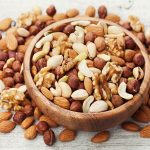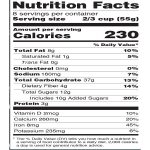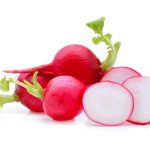
Watching your cholesterol intake has gotten easier. Nutrition experts now agree that certain foods high in cholesterol, like shrimp and eggs, don’t have the impact on your blood cholesterol that was once thought. Even better, some foods can help lower your blood cholesterol level. Walnuts have healthy unsaturated fats that help lower LDL — that’s the unhealthy type of cholesterol. Almonds, hazelnuts and pistachios are good choices, too. Beans and oats have a magic bullet — soluble fiber, which helps flush cholesterol out of your system before it can do harm and also helps with digestive health. Enjoy hot or cold oat cereals and experiment with beans in place of meat. Avocados are rich in mono-unsaturated fatty acids and can help lower LDL. Mash a few tablespoons to spread on sandwiches instead of mayo and dip raw veggies rather than chips in fresh guacamole. Plant-based foods, in general, naturally contain sterols and stanols, substances that fight off cholesterol, another reason to boost your intake. Top sources include wheat germ and wheat bran, peanuts, almonds, sesame and olive oils, and Brussels sprouts. Studies have found that getting 2 to 3 grams a day can lower LDL up to 14%. Your overall diet plan can help lower cholesterol, too. Options include the DASH diet (Dietary Approaches to Stop Hypertension), also designed to lower blood pressure, and the… read on >




























-300x200.jpg)







-300x169.jpg)
